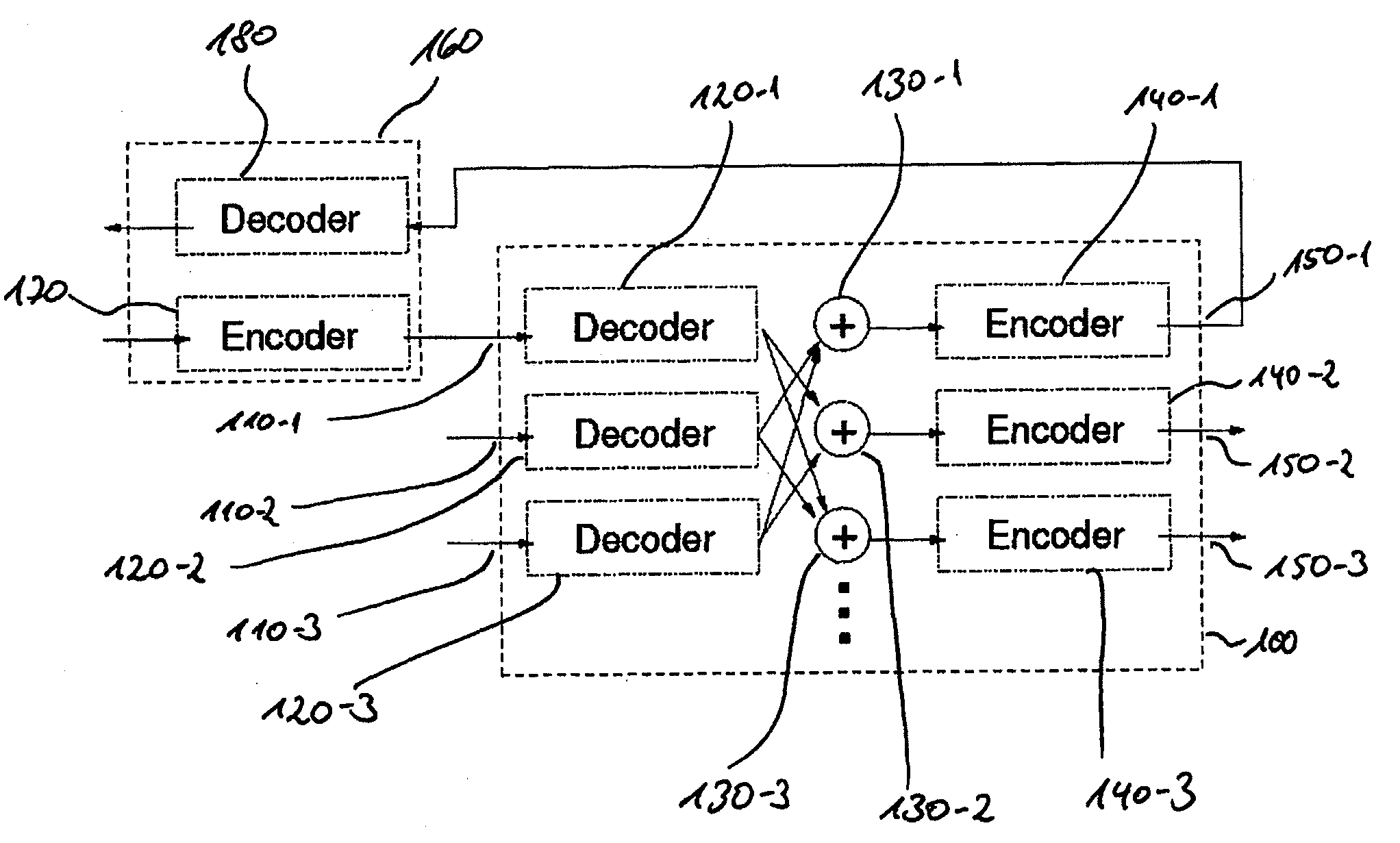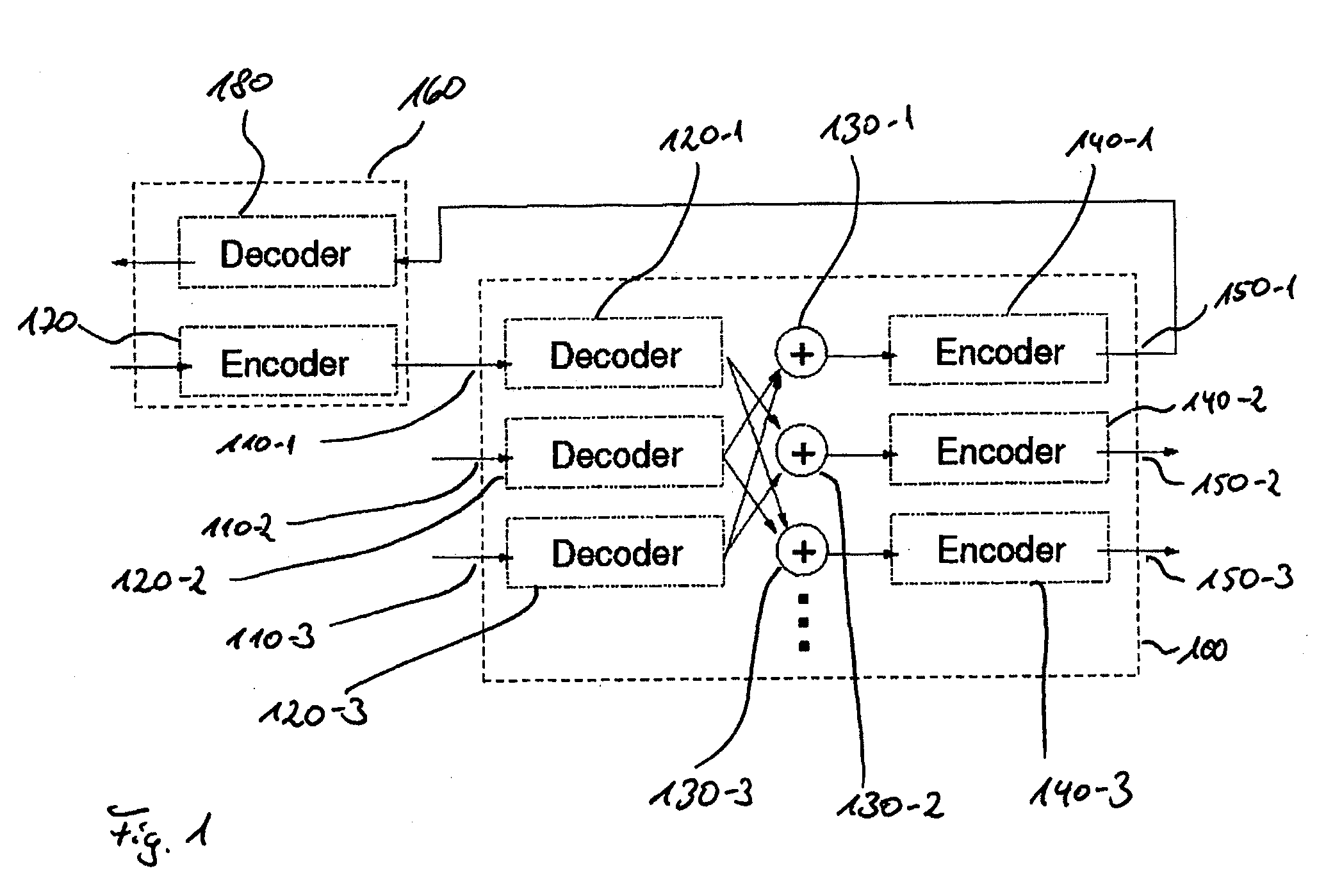Mixing of Input Data Streams and Generation of an Output Data Stream Thereform
a technology of input data and output data, which is applied in the direction of speech analysis, instruments, and transducer casings/cabinets/supports, etc., can solve the problems of affecting the quality of achievable data, introducing quantization noise into the signal to be processed, and affecting the availability of bandwidth and delay. , to achieve the effect of complex operation
- Summary
- Abstract
- Description
- Claims
- Application Information
AI Technical Summary
Benefits of technology
Problems solved by technology
Method used
Image
Examples
Embodiment Construction
[0043]With respect to FIGS. 4 to 12C, different embodiments according to the present invention will be described in more detail. However, before describing these embodiments in more detail, first with respect to FIGS. 1 to 3, a brief introduction will be given in view of the challenges and demands which may become important in the framework of conferencing systems.
[0044]FIG. 1 shows a block diagram of a conferencing system 100, which may also be referred to as a multi-point control unit (MCU). As will become apparent from the description concerning its functionality, the conferencing system 100, as shown in FIG. 1, is a system operating in the time domain.
[0045]The conferencing system 100, as shown in FIG. 1, is adapted to receive a plurality of input data streams via an appropriate number of inputs 110-1, 110-2, 110-3, . . . of which in FIG. 1 only three are shown. Each of the inputs 110 is coupled to a respective decoder 120. To be more precise, input 110-1 for the first input dat...
PUM
 Login to View More
Login to View More Abstract
Description
Claims
Application Information
 Login to View More
Login to View More - R&D
- Intellectual Property
- Life Sciences
- Materials
- Tech Scout
- Unparalleled Data Quality
- Higher Quality Content
- 60% Fewer Hallucinations
Browse by: Latest US Patents, China's latest patents, Technical Efficacy Thesaurus, Application Domain, Technology Topic, Popular Technical Reports.
© 2025 PatSnap. All rights reserved.Legal|Privacy policy|Modern Slavery Act Transparency Statement|Sitemap|About US| Contact US: help@patsnap.com



